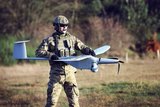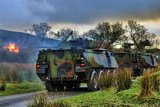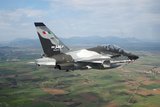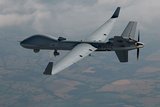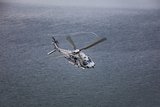Norwegian F-16 fighters fly their last mission
Norway bids farewell to the last of its F-16 fleet, pictured above. (Photo: Norwegian MoD)
The Royal Norwegian Air Force has announced its F-16 fighter jets flew their last mission on 6 January before new F-35s take over as the nation’s main fighter platform.
The Bodø Air Base will also be retired as Quick Reaction Alert missions will be performed from Evenes Air Station, which is based at a more northern location.
The Norwegian MoD tasked the nation’s Defence Materiel Agency to lead the retirement of the F-16 in September 2019 as the nation received its first few F-35s.
According to Shephard Defence Insight, Oslo took delivery of the first F-35A in 2017 and put 22 aircraft into service as of March 2020.
By 2025, all 52 of the ordered F-35s will be in service.
Many of the F-16s will not be retired from service but instead sold as second-hand aircraft.
On 20 December 2021, the Romanian parliament approved the acquisition of 32 Norwegian F-16 jets. The Norwegian MoD estimated that Romania has a budget of €454 million ($515 million) for this purpose.
In the same month, a contract was signed with Draken International to sell up to 12 F-16s for training in the US.
Related Programmes in Defence Insight
Related Equipment in Defence Insight
More from Air Warfare
-
![Portugal signals interest in establishing A-29N final assembly line]()
Portugal signals interest in establishing A-29N final assembly line
As the launch customer for the NATO-configured variant, Portugal also took delivery of the first five A-29N aircraft from its order for 12, placed in 2024.
-
![Leonardo signs contract on Austria’s M-346 aircraft order]()
Leonardo signs contract on Austria’s M-346 aircraft order
The first of the 12 M-346 aircraft are expected to be delivered to the Austrian Air Force by 2028, according to the company.
-
![2025 UAV market review: $7.8 billion in new contracts signed as US leads spending]()
2025 UAV market review: $7.8 billion in new contracts signed as US leads spending
Qatar and Indonesia followed the US’s high spending on new uncrewed aerial vehicle contracts across 2025, while MALE and micro drones and loitering munitions were particularly popular subcategories this year.
-
![German Navy in “ramp-up” phase as it welcomes first NH90 Sea Tiger delivery]()
German Navy in “ramp-up” phase as it welcomes first NH90 Sea Tiger delivery
With all 31 aircraft set to be delivered by 2030, the helicopters will gradually replace the ageing Sea Lynx fleet which are due to be retired in 2026.







